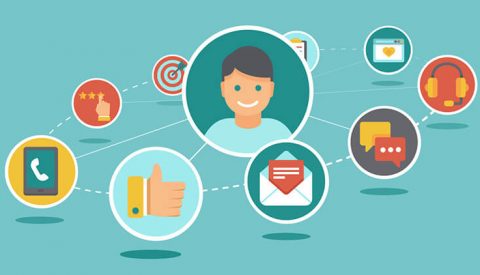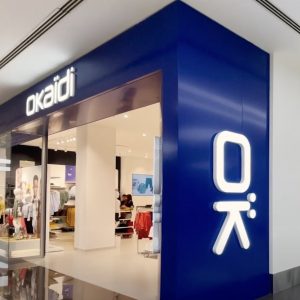

Today, we’ll be speaking with two experts to explain what a DMP is.
What is a DMP? Some random acronym perhaps? If you don’t work in data, you may never have heard of it.
Christophe Doise and Jérôme Yvernogeau are here to tell you more about it.
First things first: can you tell us about yourselves?
Christophe: I joined the company last September, and I manage the campaign team within the larger Customer Performance team. My team works for the group’s brands to communicate with our customers by email, text, etc., whether for store and web commercial operations, to promote products or to send loyalty benefits to customers.
Jérôme: I take care of traffic and traffic acquisition. My job is to manage and increase traffic on our sites, through both natural referencing (for example, the keywords on our websites) and ads on Google and other search engines or social media. Like those ads you see when you’re browsing online.
It’s a large-scale project that involves several teams: IT, web, marketing, customer performance etc.
And so what is a DMP? And why are we talking about this right now?
J : It refers to a data management platform, but we talk more now about CDP—customer data platform.
C : Yes, DMPs are strongly driven towards digital data, whereas with a CDP, we integrate both online and offline (from stores) data into a single solution.
ÏDKIDS has just chosen its CDP, so we’re right in the middle of integrating this new tool. Data will be fed into the tool by tags on our websites and data flows from stores (information provided by customers, sales tickets, loyalty programme etc.). The CDP will also let us identify a customer’s visits to a website, even if they don’t log in, thanks to various reconciliation techniques.
J : It’s a large-scale project that involves several teams: IT, web, marketing, customer performance etc.
It’s not enough to just ‘have’ the data. You have to be able to exploit them.
Why do we need a dedicated tool? We already have all our customer data—isn’t that what’s important?
C : Today, we have practically the same data, but they are spread over several tools: it’s complicated to extract, cross-reference or filter them to get the information you need while complying with strict data protection laws. This is what makes the process very complex and requires specific technical resources.
What type of information are you trying to obtain? And for what type of use?
C : The aim is to aggregate all the data to better understand our customers and tailor our communication to them.
For example, for Christmas this year at Oxybul, we’ll be able to identify the customers who bought over the 2019 Christmas period (in stores and online) but not yet for Christmas 2020 and who recently visited our website. By cross-referencing their profile (parent, grandparent, kids’ ages, product families purchased etc.) and their web browsing, we can send them a personalised email on the type of gifts for 2020 that would suit them best.
Another example would be if a customer has visited the Okaïdi Ceremony pages a couple times in the past few months and looked at product files without making a purchase. By identifying them, we could send them a tailored message, or a special discount on Ceremony items maybe, to encourage them to buy. The aim is to convert customers who intend to buy.
J : And that’s for customers who already know about us, but there’s also an aspect aimed at winning over new customers.
Using the data we know about our customers, we can create a “typical profile”: What sites do they look at? What brands are they following on social media? What is their overall consumer behaviour like?
By comparing this profile with others, we can identify prospective customers that are not among our existing customers, but who are similar and would be very likely to buy from us. We could target our marketing to them while they are browsing online and on social media.
We’re trying to give our customers a complete digital experience.
Could you sum up the main benefit of this tool for our customers?
J : We’re trying to give our customers a complete digital experience.
C : With these tools, we can refine our communication and send our customers content that is most suited to their current needs. It’s personalised and relevant information that’s useful.
And for our brands?
J : Today, our investments in terms of traffic management and acquisition are substantial. Targeting our marketing would help optimise them—we could invest less, but better.
C : Plus, customers who feel that the brand understands them and offers tailored content will be more loyal over time.











